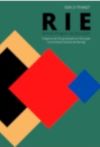APRENDIZAGEM E ATIVIDADE
Resumen
A fim de estruturar a vertente francesa da Didática Profissional, o pesquisador Pierre Pastré elegeu, como objeto de seu estudo, em um sentido amplo da palavra, a aprendizagem e, de forma especial, a aprendizagem dos adultos, na medida em que examina, de forma inseparável, os elementos do binômio “aprendizagem – atividade”, ambos circunstanciados pelo ambiente do trabalho. Dessa forma, no presente trabalho, o autor expressa suas preocupações a respeito do sentido da aprendizagem, observada no contexto do trabalho, ao tempo em que relativa com a aprendizagem escolar. Pierre Pastré consegue situar o sentido da aprendizagem, na medida em que identifica determinadas classes de situações de aprendizagem, com uma influência marcante do didata da matemática francês Guy Brousseau. Dessa forma, a partir de uma análise da atividade produtiva e da atividade construtiva, Pastré consegue descrever um conjunto de situações de aprendizagem e, sobretudo, situações de aprendizagem envolvendo a construção de um meio (milieu) no ambiente de trabalho. Finalmente, o artigo de Pierre Pastré proporciona, em certa medida, uma perspectiva diferenciada para a compreensão da aprendizagem do estudante e aprendizagem do professor de Matemática.
Descargas
Citas
Bachelard G. (1949), Le rationalisme appliqué, Paris, PUF.
Boucheix. J-M. (2005, à paraître), Simuler pour aider à comprendre. Relier des modèles mentaux selon une hiérarchie d’abstraction, in Pastré (dir), Apprendre par la simulation, Toulouse, Octares, chapitre 6.
Broadbent D., Fitzgerald P., Broadbent M. (1986), Implicit and explicit knowledge in the control of complex systems, British Journal of Psychology, 77, 33-50.
Brousseau. G. (1998), Théorie des situations didactiques, Grenoble, La Pensée Sauvage.
Bruner. J. (1983), Savoir faire, savoir dire, Paris, PUF.
Caens-Martin S. (2005, à paraître), La taille de la vigne : concevoir un simulateur pour apprendre à gérer un système vivant à des fins de production, in Pastré (dir), Apprendre par la simulation, Toulouse, Octares, chapitre 4.
Jaunereau A. (2005, à paraître), Du raisonnement des agriculteurs à l’élaboration d’un simulateur de mise en culture du colza, Education Permanente.
Martinand J-L. (1992), Enseignement et apprentissage de la modélisation en sciences, Paris, INRP.
Ochanine D. (1981), L’image opérative. Actes de séminaire et recueil d’articles, Université Paris 1, ronéotypé.
Pastre P. (2000), Conceptualisation et herméneutique: à propos d’une sémantique de l’action, in Barbier, Galatanu (dir), Signification, sens, formation, Paris, PUF, 45-60.
Pastre. P. (2005, à paraître), Apprendre par la résolution de problèmes : le rôle de la simulation, in Pastré (dir), Apprendre par la simulation, Toulouse, Octares, chapitre 1.
Rabardel P., Samurcay R. (2004), Modèles pour l’analyse de l’activité et des compétences. Propositions, in Samurçay, Pastré (dir), Recherches en didactique professionnelle, Toulouse, Octares, 163-180.
Rabardel P. (2005, à paraître), Instrument subjectif et développement du pouvoir d’agir, in Rabardel, Pastré (dir), Modèles du sujet pour la conception, Toulouse, Octares, chapitre 1.
Raisky C. (1996), Doit-on en finir avec la transposition didactique ? in Raisky, Caillot (dir), Au-delà des didactiques, le didactique, Bruxelles, de Boeck, 37-59.
Raisky C. (1999), Complexité et didactique, Education Permanente, 139, 37-63.
Recope M. (1998), La synthèse assimilatrice: pour une théorie de l’organisation de l’action, in Vergnaud (dir), Compétences complexes dans l’éducation et le travail : qu’est-ce que la pensée ? Cdrom Ardeco, 196-208.
Ricoeur P. (1986), Du texte à l’action, Paris, Seuil.
Samurcay R., Rogalski J. (1998), Exploitation didactique des situations de simulation, Le Travail Humain, 61, 333-359.
Schon. D. (1983), The reflexive practitioner: How professionals think in action, New-York, Basics Books.
Vergnaud. G. (1987), Les fonctions de l’action et de la symbolisation dans la formation des connaissances chez l’enfant, in Piaget (dir), Psychologie, Paris, Gallimard, Pleiade, 821-844.
Vergnaud. G. (1996), Au fond de l’action, la conceptualisation, in Barbier (dir), Savoirs théoriques et savoirs d’action, Paris, PUF, 275-292.
Veyne. P. (1978), Comment on écrit l’histoire, Paris, Seuil, Point.
Derechos de autor 2021 Imagens da Educação

Esta obra está bajo licencia internacional Creative Commons Reconocimiento-NoComercial-SinObrasDerivadas 4.0.
Declaro que o presente artigo é original, não tendo sido submetido à publicação em qualquer outro periódico nacional ou internacional, quer seja em parte ou em sua totalidade. Declaro, ainda, que uma vez publicado na revista Imagens da Educação,ele não será submetido por mim ou pelos demais co-autores a outro periódico. Por meio deste instrumento, em meu nome e dos co-autores, cedo os direitos autorais do referido artigo à Revista e declaro estar ciente de que a não observância deste compromisso submeterá o infrator a sanções e penas previstas na Lei de Proteção de Direitos Autorias (Nº 9609, de 19/02/98).











1.png)

